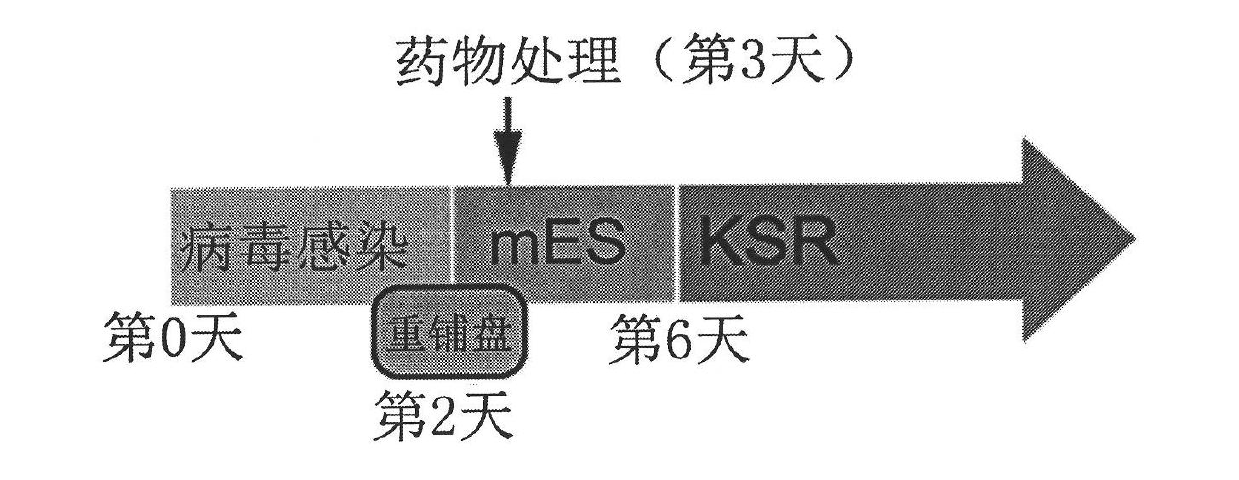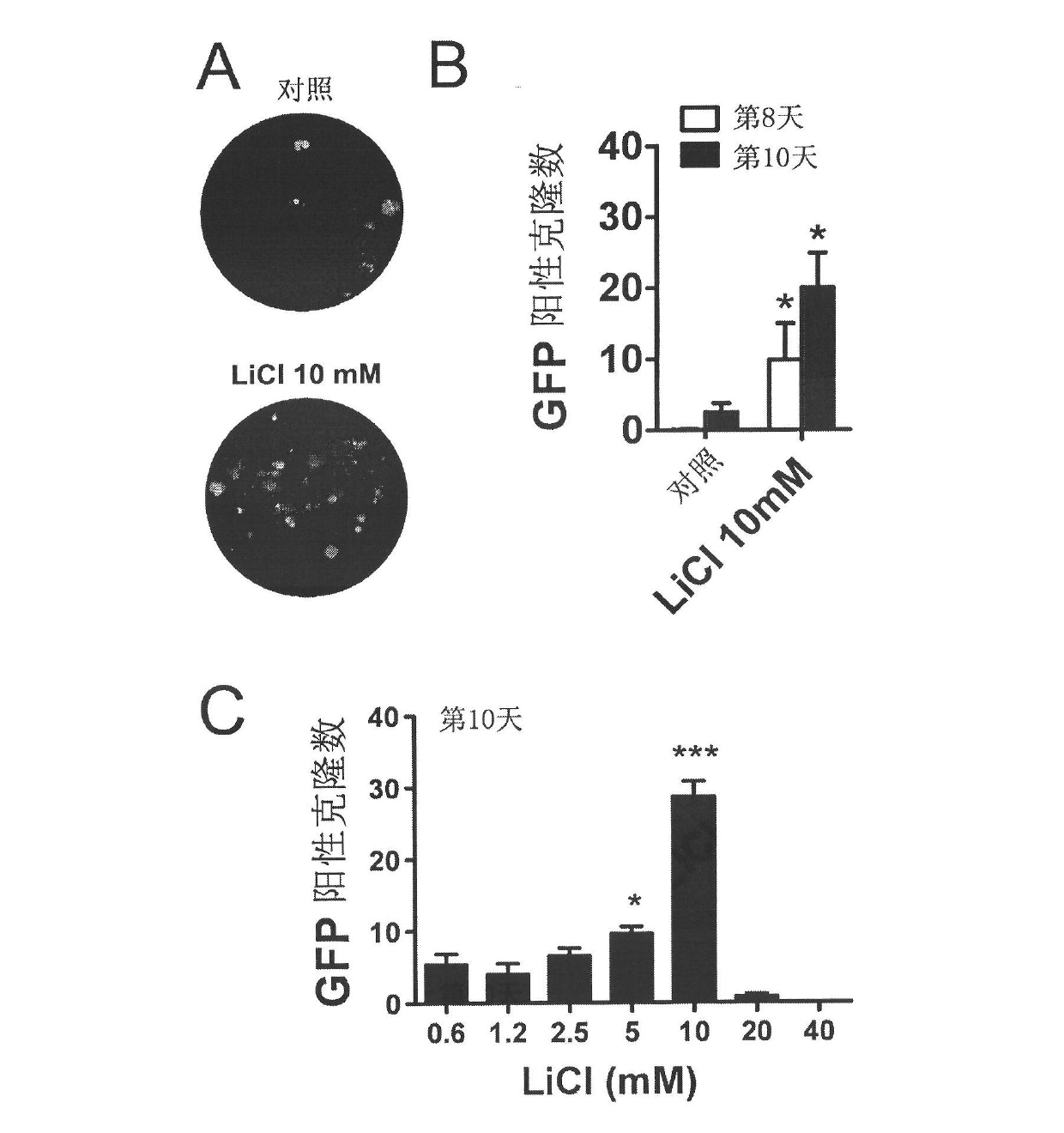Preparing method of iPS cell and medium for preparing iPS cell
A technology for pluripotent stem cells and culture medium, which is applied in the preparation of induced pluripotent stem cell culture medium and the field of induced pluripotent stem cell preparation, can solve the problems of low induction efficiency of iPS cells, obstacles to the development and application of iPS cells, etc. Good totipotency effect
- Summary
- Abstract
- Description
- Claims
- Application Information
AI Technical Summary
Problems solved by technology
Method used
Image
Examples
Embodiment 1
[0059] Example 1 : Stem cell medium supplemented with lithium salt can promote the formation of iPS induced by four factors
[0060] a. Mix the virus with four factors (Oct4, Sox2, Klf4, c-Myc) in equal volumes, infect a total of 180,000 OG2 mouse embryonic fibroblasts in one well of a 6-well plate, and incubate at 37°C for 5 %CO 2cultured in DMEM supplemented with 10% fetal bovine serum. The day when the virus was added was regarded as day 0. On the second day, the cells were digested and resuspended in mES medium, and planted in a 96-well plate pre-filled with feeder cells (radiation-treated mouse embryonic fibroblasts). There were 5000 cells in the well, and the mES medium supplemented with different concentrations of LiCl (0.6mM, 1.2mM, 2.5mM, 5mM, 10mM, 20mM and 40mM) was used on the 3rd day, and the mES medium supplemented with different concentrations of LiCl ( 0.6mM, 1.2mM, 2.5mM, 5mM, 10mM, 20mM and 40mM) KSR medium, and then changed to KSR medium for culture on t...
Embodiment 2
[0063] Example 2 : Stem cell medium supplemented with lithium salt can promote the formation of iPS induced by three factors
[0064] a. Mix the viruses of the three factors (Oct4, Sox2, Klf4) in equal volumes, infect a total of 180,000 OG2 mouse embryonic fibroblasts in one well of a 6-well plate, and incubate at 37°C, 5% CO 2 cultured in DMEM supplemented with 10% fetal bovine serum. The day when the virus was added was regarded as day 0. On the second day, the cells were digested and resuspended in mES medium, and planted in a 96-well plate pre-filled with feeder cells (radiation-treated mouse embryonic fibroblasts). There were 5000 cells in the well, and the mES medium supplemented with different concentrations of LiCl (0.6mM, 1.2mM, 2.5mM, 5mM, 10mM, 20mM and 40mM) was used on the 3rd day, and the mES medium supplemented with different concentrations of LiCl ( 0.6mM, 1.2mM, 2.5mM, 5mM, 10mM, 20mM and 40mM) KSR medium, and then changed to KSR medium for culture on the 8...
Embodiment 3
[0067] Example 3 : The iPS cell line obtained by adding lithium salt is pluripotent
[0068] a. As above, mouse embryonic fibroblasts were infected with 4 factors (Oct4, Sox2, Klf4, c-Myc) or 3 factors (Oct4, Sox2, Klf4), cultured in stem cell medium supplemented with LiCl, after infection After 14 days (4 factors) or 20 days (3 factors), representative clone groups were selected according to the clone morphology and fluorescence expression, and a uniform iPS cell line was formed after passage.
[0069] b. Observing the morphology of the selected iPS cell lines and staining for stem cell-specific proteins. Such as Figure 5 As shown, the iPS cell line has a characteristic morphology similar to embryonic stem cells, strongly expresses the green fluorescence of Oct-GFP, and is positive for alkaline phosphatase (AP). Immunofluorescent staining of iPS cells using antibodies against stem cell-specific proteins showed that both iPS cell lines expressed stem cell-specific protein...
PUM
 Login to View More
Login to View More Abstract
Description
Claims
Application Information
 Login to View More
Login to View More - R&D
- Intellectual Property
- Life Sciences
- Materials
- Tech Scout
- Unparalleled Data Quality
- Higher Quality Content
- 60% Fewer Hallucinations
Browse by: Latest US Patents, China's latest patents, Technical Efficacy Thesaurus, Application Domain, Technology Topic, Popular Technical Reports.
© 2025 PatSnap. All rights reserved.Legal|Privacy policy|Modern Slavery Act Transparency Statement|Sitemap|About US| Contact US: help@patsnap.com



